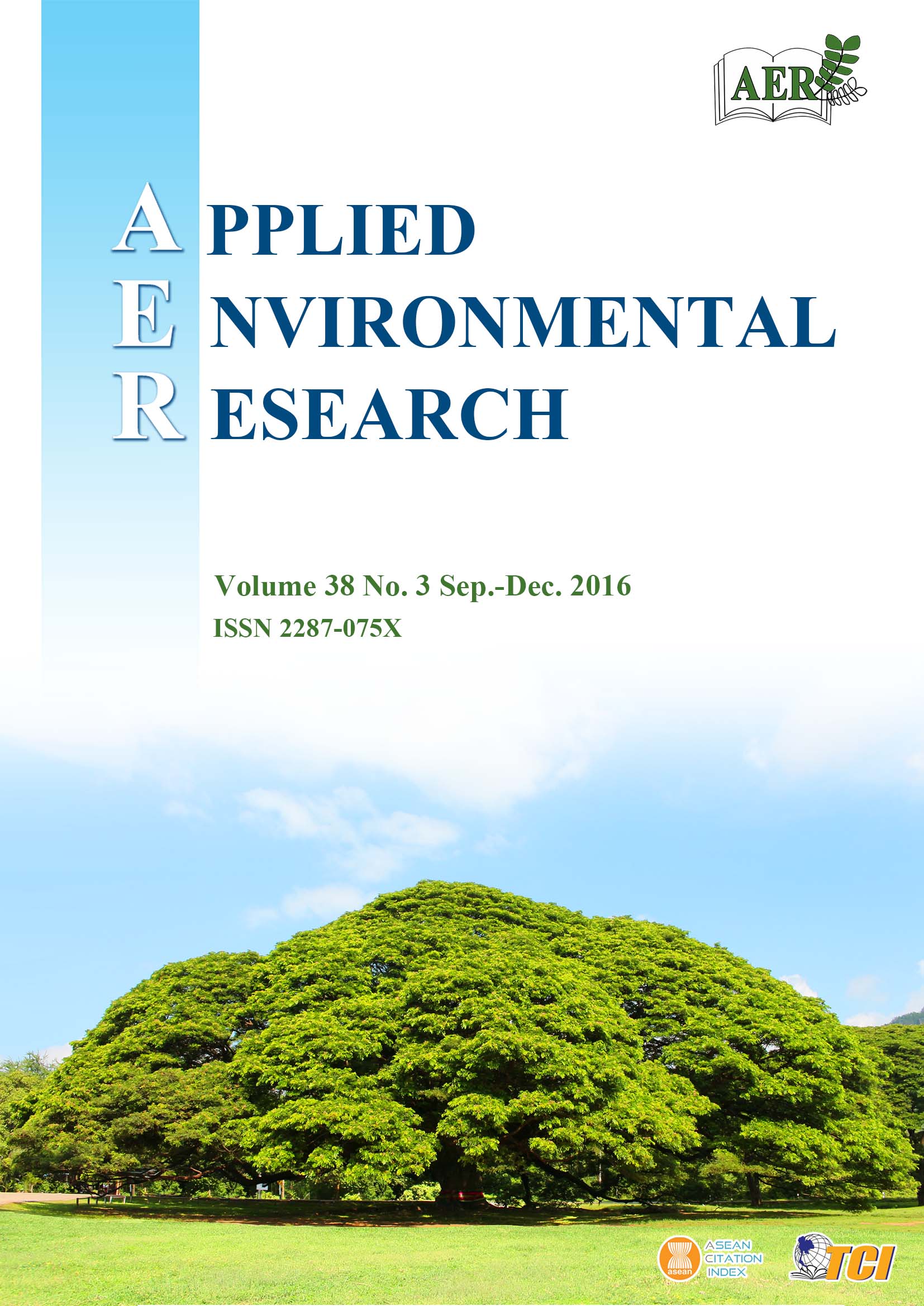Application of Life Cycle Assessment Method for Environmental Impact Assessment of Fired Brick Production Plant in Thailand
Main Article Content
Abstract
In many Asian countries, fired bricks are produced by burning raw bricks in a rudimentary clamp kiln without pollution control mechanisms, a practice which contributes to several kinds of environmental impact. This research investigated the inputs and outputs associated with production of fired bricks using the rice husk-fuelled clamp kiln. Data collected included raw material use, energy, products, emissions and kiln temperatures. To quantify environmental impacts, the consequential-focused life cycle assessment (LCA) approach was adopted. The impacts were assessed in terms of fuel substitution as the acquisition of another fuel was required to substitute for electricity. The findings indicated that the clamp kiln technology produced low CO2 emissions per unit of production and per unit of energy input, despite poor specific energy consumption. The LCA analysis indicated that the use of rice husk was the major contributor to environmental impact, and that abiotic depletion of fossil fuels represented the environmental hotspot. To improve combustion efficiency, the clamp kilns should be either insulated or replaced with more efficient kiln technology, in conjunction with the use of rice husk.
Article Details

This work is licensed under a Creative Commons Attribution-NonCommercial 4.0 International License.
Published articles are under the copyright of the Applied Environmental Research effective when the article is accepted for publication thus granting Applied Environmental Research all rights for the work so that both parties may be protected from the consequences of unauthorized use. Partially or totally publication of an article elsewhere is possible only after the consent from the editors.

